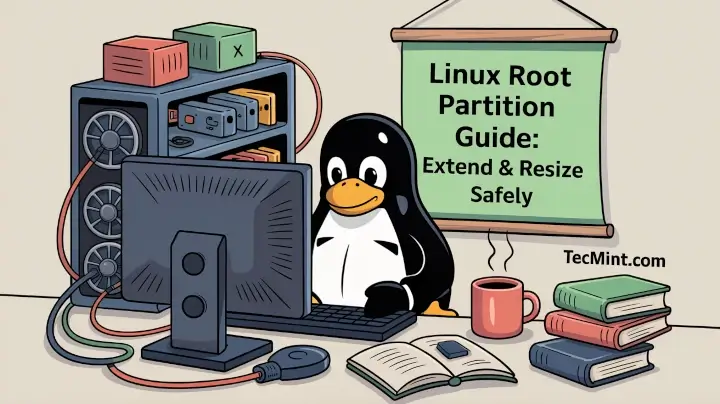One of the crucial factors that you must consider when running virtual machines is having a scalable storage infrastructure. Virtual machines (VMs) require storage that is highly available, reliable, and can scale easily as demand increases. As organizations adopt virtualization, the number of VMs and their storage requirements can grow rapidly.
If the storage infrastructure is not scalable, it can become the limiting factor to the performance and availability of the VMs. With VMware vSAN, storage resources can be added or removed easily, and the storage pool can automatically rebalance itself to optimize performance and capacity.
What Is VMware vSAN? What Does It Do?
Users can create a highly available and scalable storage infrastructure for their virtualized environment with VMware vSAN, which is a software-defined storage solution. VMware vSAN integrates with VMware vSphere and utilizes the local storage resources of the Elastic Sky X integrated (ESXi) hosts in your vSphere cluster to create a distributed storage system.
One of the leading virtualization platforms, VMware vSphere, provides a complete set of tools and services for creating and managing virtualized environments. With vSAN, multiple ESXi hosts’ storage capacity aggregates into a single pool of storage that the vCenter Server can easily manage. With features like data deduplication and compression, erasure coding, and automatic rebalancing, vSAN enables users to achieve high performance, capacity efficiency, and reliability.
The main objective of vSAN is to simplify storage provisioning and management of machines in virtualized environments. By using the local storage resources of your ESXi hosts, vSAN eliminates the need for dedicated storage hardware, reducing costs and simplifying deployment. It also provides a highly available and resilient storage infrastructure that can tolerate failures and ensure that your virtual machines remain available at all times.
Benefits of VMware vSAN for Your Business
Scalability
vSAN provides a highly scalable storage infrastructure that can easily scale up or down as your business needs vary. Ultimately, this makes it easier to manage storage resources and eliminates the need for dedicated storage hardware.
Resiliency
VMware vSAN is designed to ensure high availability and resiliency for virtualized workloads. It provides advanced data protection features such as a redundant array of independent disks (RAID) and erasure coding. It can also automatically repair failed components to ensure data availability. This minimizes the chances of failure and downtime.
Reduced Costs
Since vSAN leverages the local storage resources of ESXi hosts, it eliminates the need for dedicated storage hardware. This reduces costs and simplifies deployment. It also provides efficient data compression and deduplication, which can help reduce storage costs.
Simplified Management
vSAN integrates fully integrated with VMware vSphere, which enables centralized management of virtual machines and storage resources. Ultimately, this makes management much simpler and improves efficiency while ensuring advanced automation capabilities through vSphere application programming interfaces (APIs).
Better Support for Modern Applications
Modern-day applications require access to scalable storage to deal with the dynamic workloads that users throw at them. vSAN provides better support for modern applications, such as containerized workloads and big data analytics. With vSAN, businesses can easily deploy and manage modern applications in virtualized environments.
How to Set Up and Configure VMware vSAN
These are the typical steps you will have to implement when setting up and configuring VMware vSAN:
Step 1: Determining Hardware and Software Requirements
You must ensure that your hardware and software meet the minimum requirements for vSAN. This includes compatible hardware, such as solid state drives (SSDs) or the modern nonvolatile memory express (NVMe) drives and supported versions of vSphere and vCenter Server.
Step 2: vSAN Network Configuration
Configuring the vSAN network enables proper communication between ESXi hosts in the cluster. You can configure the network using dedicated physical network adapters or virtual network adapters.
Step 3: vSAN Licensing
VMware vSAN can be licensed using three options: per CPU, per concurrent user in 10 or 100 license packs for virtual desktop infrastructure (VDI), or per virtual machine (VM).
Step 4: Cluster Creation
After the hardware and network configurations are in place, you can create a vSAN cluster. This involves adding the ESXi hosts to the cluster and configuring the vSAN storage.
Step 5: vSAN Storage Configuration
This step involves configuring the vSAN storage policies, which define how virtual machines are stored and replicated across the cluster. The configurations include settings for data protection, performance, and capacity.
Step 6: Performance Optimization
You may want to optimize vSAN performance by configuring settings such as cache tiering and RAID level selection. This can help improve performance and ensure data availability.
Step 7: Monitoring and Management
Finally, you can use the vCenter Server console or other management tools to manage and monitor your vSAN’s cluster health and storage resources and perform routine maintenance tasks.

Tips for Getting the Most Out of VMware vSAN
These are some of the tested strategies you can use to get the most out of your VMware vSAN:
- Properly size your vSAN cluster. This is crucial for achieving optimal performance and capacity.
- Use cutting-edge hardware. vSAN can take advantage of the latest storage technologies, such as flash-based SSDs and NVMe drives to deliver high-performance and low-latency storage.
- Use vSAN storage policies. Using vSAN storage policies ensures that virtual machines are stored efficiently and with the appropriate levels of protection and performance.
- Enable deduplication and compression. Enabling data compression and deduplication can help reduce storage costs and improve performance by reducing the amount of data that needs to be stored.
- Optimize cache tiering. You can optimize cache tiering by ensuring that you have enough cache capacity and by configuring the cache reservation settings appropriately.
Common Issues With VMware vSAN and Troubleshooting Strategies
Disk Group Degradation
vSAN uses disk groups to provide redundancy and ensure data availability. If a disk group degrades, it can result in a loss of redundancy and impact data availability. You can fix this by replacing failed disks and ensuring that there are enough disks in the group. You must also check for any network or hardware issues impacting the disk group.
Slow Performance
Slow vSAN performance can impact application performance and user experience. Some of the common reasons for slow performance include network latency, insufficient hardware resources, and misconfigured storage policies. You can troubleshoot slow performance by reviewing the vSAN performance metrics, optimizing the cache tier, and ensuring that hardware resources are sufficient, depending on the workload.
Network Connectivity Issues
For optimal performance, vSAN requires a stable and reliable network connection between hosts in the cluster. Any connectivity issues can result in data unavailability and degraded performance. You can troubleshoot network connectivity issues by checking network settings, reviewing logs, and ensuring that firewalls and other security measures are not interfering with network traffic.
Disk Capacity Issues
Running out of disk space can result in data unavailability and a drop in performance. To troubleshoot disk capacity issues, review storage policies and reclaim space. You can also identify any oversized or unneeded virtual machines and add more disk capacity to the cluster.
Cluster Health Issues
Cluster health issues can also lead to problems with data availability and degraded performance. To troubleshoot cluster health issues, review the vSAN health and performance metrics, check host health and configuration, and ensure that all software components are up to date and compatible.
Getting Started With VMware vSAN – What You Need to Know
Before you get started with VMware vSAN, you need a cluster of at least three hosts running one of the latest versions of VMware and a minimum of one flash device and one capacity device per host. vSAN is licensed separately from the VMware vSphere hypervisor and can be deployed in different ways, including as a hybrid or all-flash solution and as a two-tier architecture or stretched cluster for disaster recovery.
It should also be noted that storage policies determine how data is stored and replicated across hosts. vSan provides tools for monitoring and managing your storage environment, including the vSphere Web Client and vSphere Client. Understanding these key concepts is essential for achieving efficient, scalable, and reliable storage for your virtualized environment with vSAN.
Final Thoughts
VMware vSAN is a powerful and flexible software-defined storage solution that can help you build a highly scalable, resilient, and cost-effective storage infrastructure for your virtualized environments. With vSAN, your business can easily manage storage resources, simplify deployment, and ensure high availability and performance for your virtual machines.
By following the steps outlined in this article and implementing the best practices for using vSAN, you can optimize your virtualization infrastructure, improve efficiency, and reduce costs. Overall, vSAN is a valuable tool for any organization looking to maximize the benefits of virtualization technology.
The Most Helpful Humans In Hosting® at Liquid Web will be happy to assist if you have any questions. Please contact us today.





